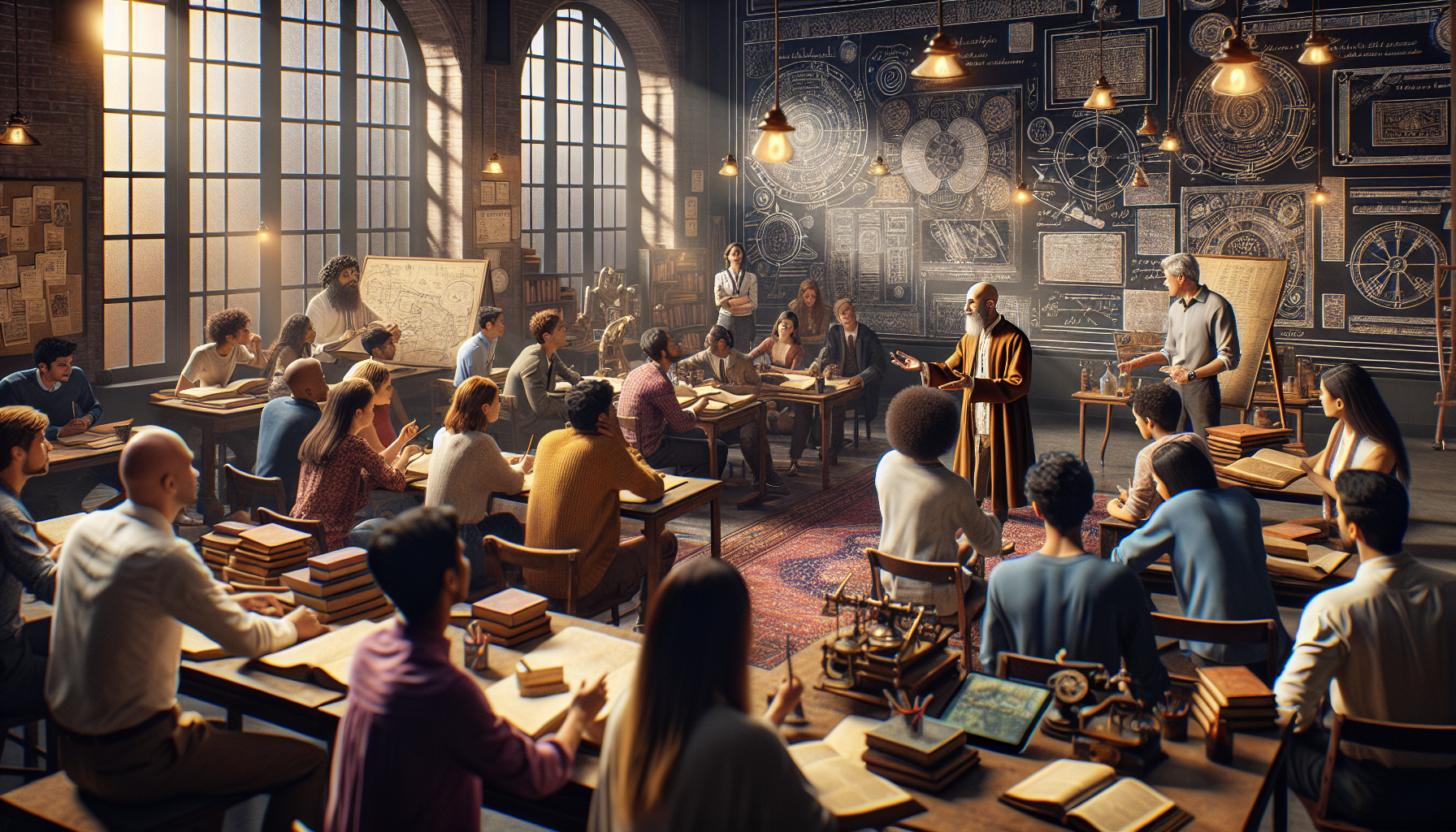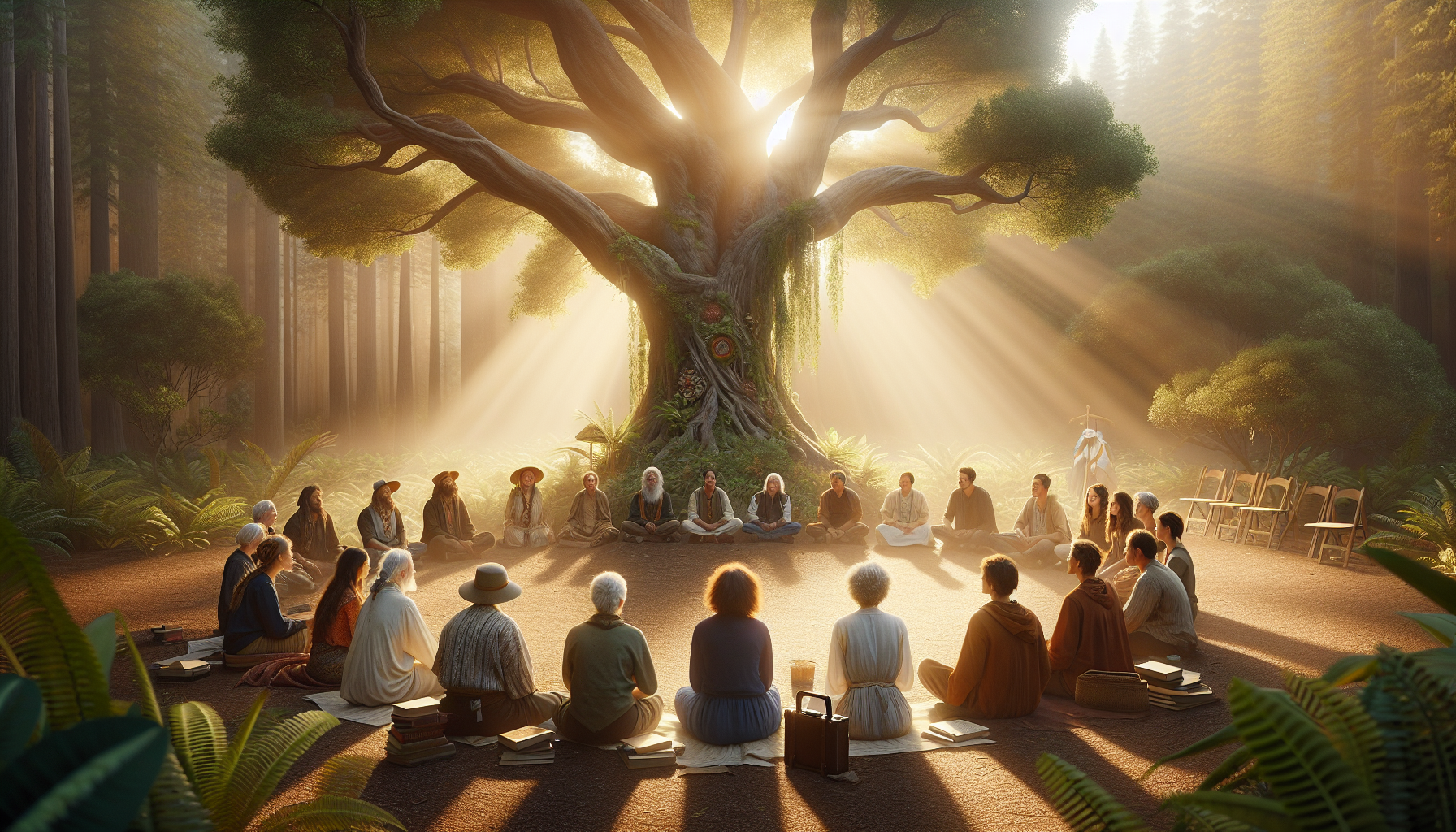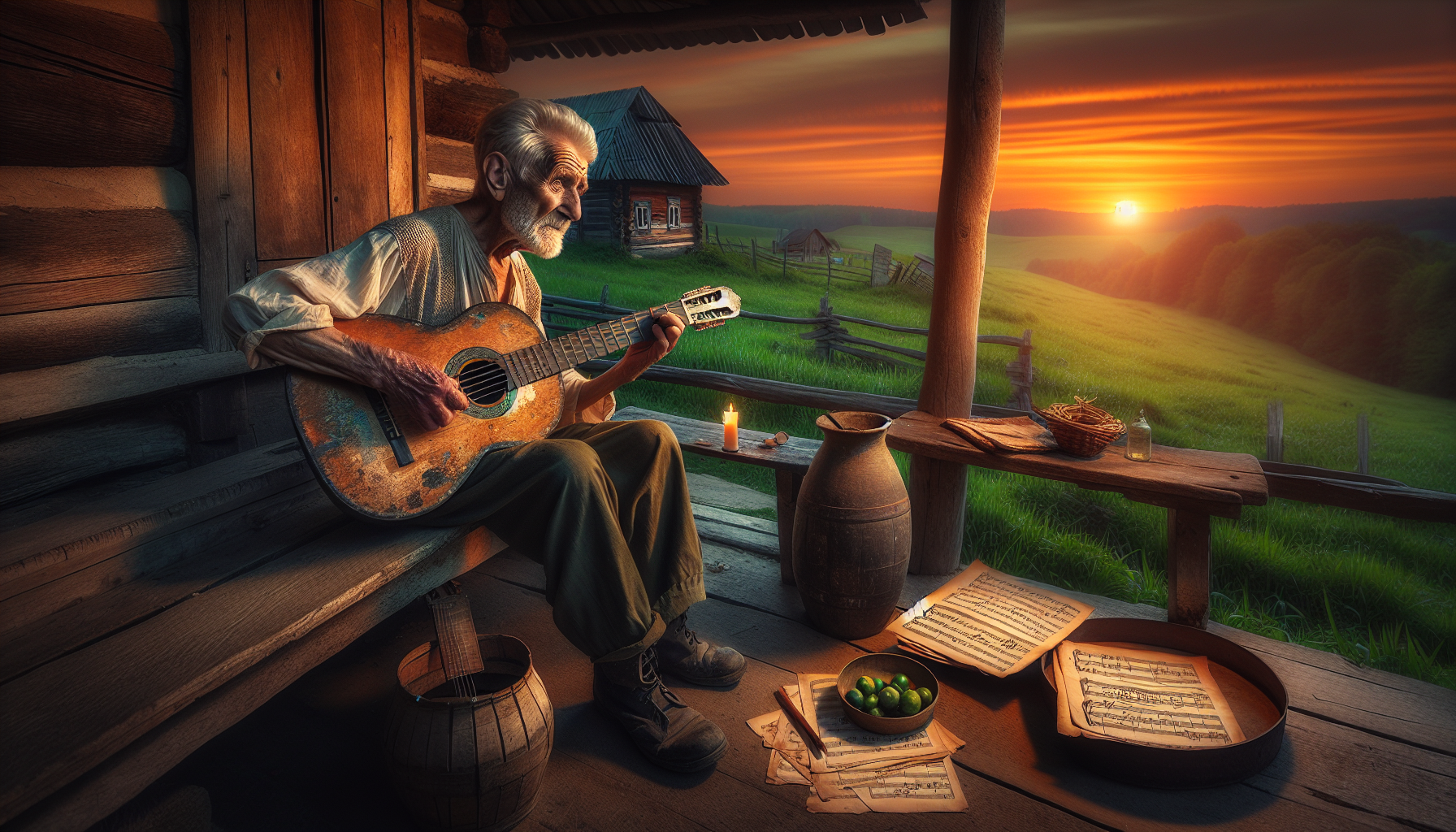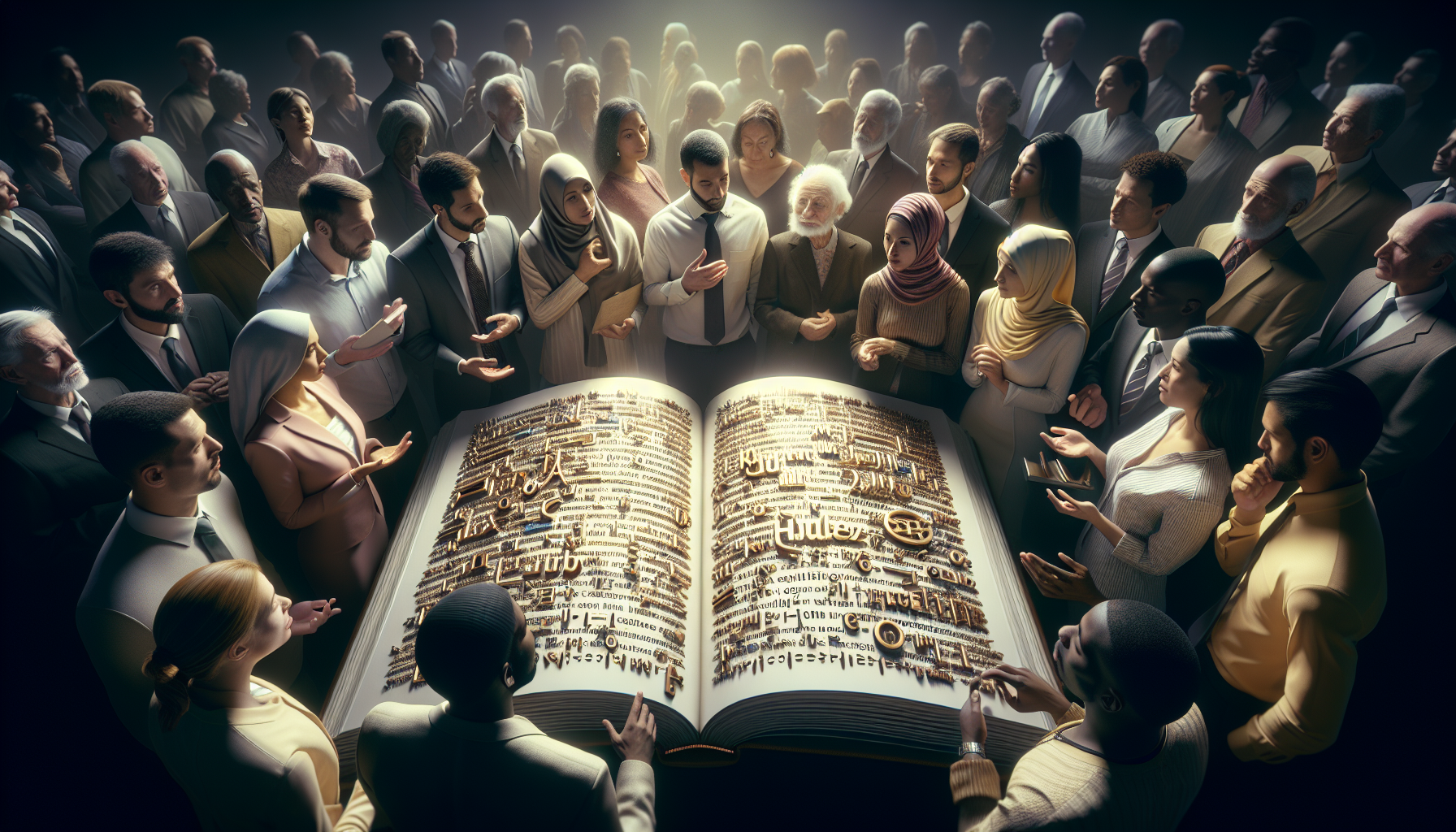In an era where digital technology dominates every aspect of our lives, from the way we communicate to how we learn, there’s a growing need to reconnect with our roots and appreciate the lessons of the past. History, often perceived as a series of dates and events to memorize, has been relegated to dusty textbooks and uninspired lectures. Yet, history is much more than that—it’s the story of humanity, a rich tapestry of triumphs, failures, innovations, and traditions that have shaped our world. Imagine a classroom where history isn’t just told but lived; where students don’t just learn about the past, but experience it in a way that ignites their curiosity and fosters a deeper understanding of the world. This is the transformative power of tradition-integrated lessons, a teaching method that brings history to life by weaving traditional practices into modern educational frameworks. 🌍
At the heart of this educational renaissance is the belief that history should be an immersive experience. By integrating traditions into the classroom, educators are finding innovative ways to engage students, making history tangible and relevant. Instead of passively listening to lectures, students might find themselves crafting pottery like ancient artisans, participating in traditional dances, or even cooking recipes from different eras. These hands-on experiences not only make learning more dynamic but also help students develop a personal connection to the past. This approach encourages them to see history not as a series of disconnected events but as a continuum that influences their lives today. By stepping into the shoes of those who lived before us, students gain empathy and insight, understanding not just what happened, but why it mattered. 🎨
This educational approach also addresses a significant challenge in modern education: the diverse ways in which students learn. Traditional classroom settings often cater to a narrow range of learning styles, leaving many students disengaged. However, by incorporating traditions into lessons, teachers can reach a broader spectrum of learners. Visual learners might be captivated by historical reenactments or period costumes, while kinesthetic learners benefit from interactive activities that require movement and touch. Auditory learners might engage more deeply through storytelling or music from different periods. This holistic approach not only accommodates various learning preferences but also creates a more inclusive and supportive educational environment. By meeting students where they are, educators can foster a lifelong love of learning and a deeper appreciation for history. 🏛️
In this article, we will delve into the myriad ways tradition-integrated lessons are revolutionizing the teaching of history. We’ll explore case studies from around the globe, highlighting schools and educators who are at the forefront of this educational movement. From innovative classroom projects to community partnerships that bring history to life, we’ll examine how these methods are being implemented and the impact they are having on student engagement and learning outcomes. We’ll also discuss the challenges and opportunities of integrating traditions into the modern curriculum and provide practical tips for educators looking to adopt these techniques. Whether you’re an educator seeking inspiration or a history enthusiast curious about new educational trends, this journey into the past promises to offer fresh insights and spark meaningful conversations about the future of learning. 🕰️
The Role of Tradition in Modern Education
In the ever-evolving landscape of education, there is an increasing emphasis on integrating traditional lessons into modern curriculums. This approach not only enriches the learning experience but also makes history come alive for students. By weaving historical traditions into classroom lessons, educators can provide a more engaging and comprehensive educational journey. The value of tradition in education lies in its ability to connect students with their cultural heritage, offering a sense of identity and belonging. Moreover, traditional lessons often include hands-on activities, storytelling, and other interactive methods that can stimulate students’ curiosity and critical thinking skills.
Historically, education was deeply rooted in tradition. Ancient civilizations, such as the Greeks and Romans, relied heavily on storytelling and oral traditions to impart knowledge and cultural values to younger generations. In many Indigenous cultures, education was, and still is, an intergenerational process, where elders play a crucial role in teaching the youth through stories, ceremonies, and practical experiences. By integrating these traditional methods into modern classrooms, educators can create a dynamic and immersive learning environment that not only teaches historical facts but also instills a deeper understanding and appreciation of cultural contexts.
Furthermore, the incorporation of traditional lessons into education can bridge the gap between generations. As young students learn about the customs and traditions of their ancestors, they gain insights into the struggles, triumphs, and daily lives of those who came before them. This connection fosters empathy and respect for cultural diversity and history. It also encourages students to reflect on their own cultural identities and consider how they can contribute to the preservation and evolution of their traditions in an increasingly globalized world. This holistic approach to education ensures that students are not only equipped with academic knowledge but also with the cultural competence needed to navigate and contribute to a diverse society.
How Tradition-Integrated Lessons Engage Students
Integrating tradition into classroom lessons can significantly enhance student engagement. By utilizing storytelling, music, dance, and other traditional forms of expression, educators can capture students’ attention and imagination. For instance, teaching history through the lens of traditional music or dance can provide students with a more vivid and personal connection to historical events. This method not only makes the lessons more enjoyable but also aids in the retention of information. When students are actively involved in their learning process, they are more likely to develop a passion for the subject and pursue further knowledge on their own.
Moreover, tradition-integrated lessons often involve collaborative activities, such as group discussions, role-playing, and projects, which promote teamwork and communication skills. These activities encourage students to share their thoughts, listen to others, and work together to solve problems. In this way, traditional lessons not only teach historical content but also help students develop essential life skills. Additionally, by experiencing history through the eyes of those who lived it, students gain a deeper understanding of the societal and cultural influences that have shaped our world. This perspective allows them to critically analyze contemporary issues and consider how historical lessons can inform future decisions.
Another benefit of tradition-integrated lessons is the opportunity they provide for students to engage with their communities. Many schools collaborate with local cultural organizations, museums, and historical societies to offer students hands-on learning experiences. These partnerships enable students to learn from experts in the field and gain firsthand knowledge of historical artifacts, documents, and practices. By connecting classroom lessons to real-world experiences, educators can inspire students to become active participants in their communities and advocates for cultural preservation. This experiential learning approach not only enriches students’ understanding of history but also instills a sense of responsibility to protect and honor their cultural heritage.
Table: Comparison of Traditional and Modern Teaching Methods
| Aspect | Traditional Teaching | Modern Teaching |
|---|---|---|
| Focus | Memorization of facts and figures | Critical thinking and problem-solving |
| Method | Lectures and rote learning | Interactive and experiential learning |
| Student Role | Passive receiver of information | Active participant in learning |
| Use of Technology | Minimal | Extensive integration |
Explore the differences in teaching methods in the table above to understand how tradition and modernity can be effectively combined in education. 📚
Case Studies: Successful Integration of Tradition in Classrooms
Several educational institutions have successfully integrated traditional lessons into their curriculums, demonstrating the positive impact of this approach. One notable example is a school in Japan that incorporates the art of Kintsugi, the traditional Japanese art of repairing broken pottery with gold, into its lessons on resilience and growth mindset. By engaging in this practice, students learn valuable lessons about embracing imperfections and viewing challenges as opportunities for personal and communal growth. This hands-on experience not only teaches students about a unique cultural tradition but also provides a powerful metaphor for personal development and perseverance.
In the United States, some schools have partnered with Native American communities to offer students an authentic understanding of Indigenous cultures. These partnerships often include field trips to reservations, where students can participate in traditional ceremonies, learn about the historical significance of sacred sites, and engage in storytelling sessions with tribal elders. This immersive learning experience provides students with a more nuanced understanding of Indigenous history and culture, fostering respect and appreciation for these communities. It also empowers Native American students by affirming their cultural identity and heritage within the educational setting.
Similarly, in New Zealand, the integration of Maori traditions into the national curriculum has been instrumental in preserving and revitalizing the Maori language and culture. By including Maori language classes, traditional crafts, and cultural ceremonies in the school program, educators are ensuring that future generations remain connected to their heritage. This approach not only benefits Maori students by strengthening their cultural identity but also enriches the educational experience of all students by promoting cultural diversity and understanding. Such successful case studies highlight the transformative potential of tradition-integrated education in fostering a more inclusive and culturally aware society.
Video Resource
To gain further insights into the benefits of tradition-integrated education, watch the following video: “Reviving Traditions in Education” by Educational Insights. This video provides real-world examples and expert perspectives on how traditional lessons can enhance modern education. 🎥
Challenges and Considerations in Tradition-Integrated Education
While the benefits of integrating traditional lessons into modern education are substantial, educators must also navigate several challenges and considerations. One primary challenge is ensuring that traditional content is presented in a culturally sensitive and accurate manner. Educators must be mindful of cultural appropriation and strive to collaborate with cultural experts and community members to develop lessons that respect and honor the traditions being taught. This approach not only ensures authenticity but also builds trust and respect between educational institutions and cultural communities.
Another consideration is the potential resistance from stakeholders who may view tradition-integrated education as outdated or irrelevant in today’s fast-paced, technology-driven world. To address these concerns, educators must effectively communicate the value of tradition as a means of enhancing critical thinking, cultural competence, and community engagement. By highlighting the tangible benefits of tradition-integrated lessons, such as improved student engagement and academic performance, educators can garner support from parents, administrators, and policymakers for this innovative approach.
Additionally, educators must balance the integration of traditional lessons with the demands of standardized testing and curriculum requirements. While tradition-integrated education offers a more holistic and enriching learning experience, it may require adjustments to the existing curriculum and teaching methods. Educators must find creative ways to align traditional lessons with academic standards and assessments while maintaining the integrity and authenticity of the cultural content. This balancing act requires ongoing professional development and collaboration among educators to share best practices and resources for successful implementation.
Actionable Steps for Educators
- Engage with cultural experts and community members to ensure accurate and respectful representation of traditions.
- Utilize interactive and experiential learning methods to make traditional lessons engaging and relevant for students.
- Collaborate with colleagues and educational institutions to share resources and strategies for tradition-integrated education.
By taking these steps, educators can successfully integrate traditional lessons into modern curriculums, creating a more engaging and culturally enriching educational experience for students. 🌟
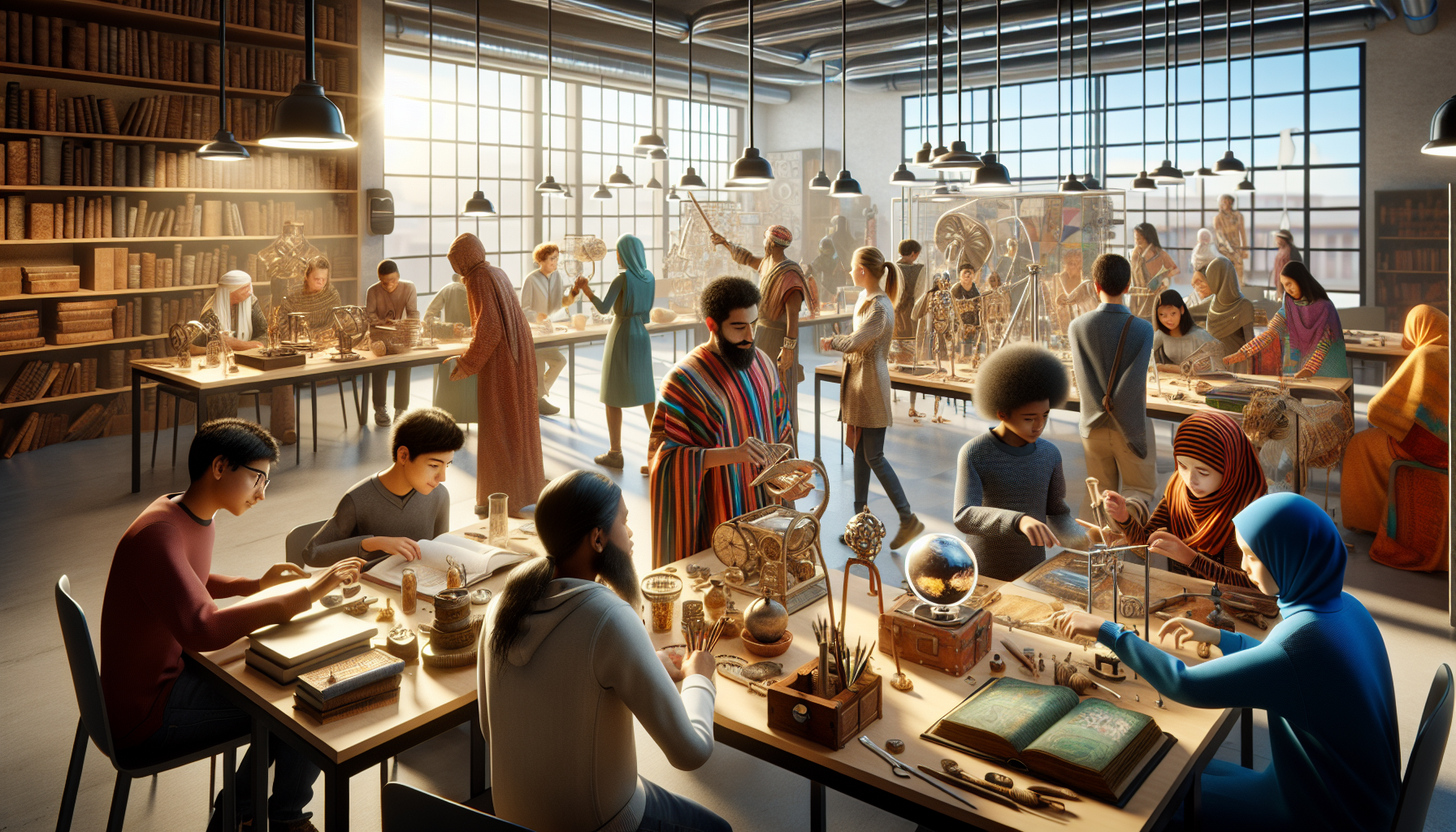
Conclusion
Reviving the past through tradition-integrated lessons offers a transformative approach to history education, breathing life into the classroom and fostering a deeper understanding of historical events and cultures. Throughout this article, we’ve explored the multifaceted benefits of integrating traditional practices and perspectives into modern teaching methodologies. By doing so, educators can create a more engaging and immersive learning experience that not only captivates students’ imaginations but also enriches their critical thinking skills.
One of the key points discussed is the ability of tradition-integrated lessons to bridge the gap between past and present, making history more relatable to students. By incorporating traditional narratives, artifacts, and customs into the curriculum, educators can provide a tangible connection to historical events. This approach helps students to perceive history not as a series of isolated events, but as a living, breathing continuum that influences the present and shapes the future. It encourages students to appreciate the complexities and nuances of historical developments, promoting a more holistic understanding of the world around them.
Another crucial aspect highlighted is the role of tradition-integrated lessons in promoting cultural awareness and empathy. By exposing students to diverse traditions and perspectives, educators can cultivate a more inclusive and empathetic classroom environment. This exposure helps students to recognize and appreciate cultural differences, fostering respect and understanding. Such lessons can dismantle stereotypes and challenge preconceived notions, preparing students to thrive in an increasingly globalized society.
Furthermore, we examined the impact of experiential learning in tradition-integrated lessons. By engaging students in hands-on activities such as reenactments, crafting traditional items, or participating in cultural ceremonies, educators can create memorable learning experiences. These activities stimulate curiosity and enhance retention by allowing students to actively participate in their own learning journey. Experiential learning not only reinforces theoretical knowledge but also develops practical skills, creativity, and teamwork, which are essential for personal and professional growth.
The article also underscored the importance of collaboration between educators, historians, and cultural practitioners. By working together, these stakeholders can design and implement lessons that are both historically accurate and culturally sensitive. This collaboration ensures that students receive a comprehensive education that honors the richness and diversity of human history. Additionally, it provides educators with the resources and support necessary to continuously innovate and improve their teaching methods.
In light of these points, the significance of tradition-integrated lessons in history education cannot be overstated. They offer a powerful tool for engaging students, fostering cultural awareness, and promoting critical thinking. As educators, parents, and community members, it is our collective responsibility to support and advocate for teaching practices that bring history to life in meaningful ways.
We encourage you to reflect on the insights shared in this article and consider how you might implement tradition-integrated approaches in your own educational or community settings. Whether you are an educator seeking to enhance your curriculum, a parent interested in supplementing your child’s learning, or simply a history enthusiast, there are numerous ways to engage with and promote this approach. Share your thoughts, experiences, and ideas in the comments section below. Your insights can inspire others and contribute to a broader dialogue on the future of history education.
Additionally, if you found this article informative and inspiring, we invite you to share it with your colleagues, friends, and networks. By spreading the word, you can help raise awareness about the benefits of tradition-integrated lessons and encourage more educators to explore this innovative approach. Together, we can create a more dynamic and inclusive learning environment for future generations.
In conclusion, tradition-integrated lessons offer a unique opportunity to revitalize history education by making it more engaging, relevant, and inclusive. By embracing this approach, we can inspire a new generation of learners to appreciate the richness of our shared past and to apply historical insights to the challenges and opportunities of the present and future. Let us all be advocates for educational practices that celebrate the diversity and depth of human history, and commit to nurturing curious, informed, and empathetic global citizens. 🌍
For further reading on this topic, consider exploring resources such as the “Journal of Experiential Education” or “History Education Research Journal” which offer valuable insights into innovative teaching methodologies and the integration of tradition into education. Stay informed, stay inspired, and keep the conversation going!
Toni Santos is a visual storyteller and educational ethnographer whose work celebrates the fluid knowledge systems of nomadic cultures. Through art and research, Toni brings attention to how learning has thrived outside traditional institutions—rooted in movement, oral tradition, and deep connection to land and community.
Guided by a passion for ancestral wisdom, adaptive pedagogy, and cultural resilience, Toni explores the tools, rituals, and environments that once shaped the minds of travelers, herders, and migrating communities. Whether illustrating storytelling circles beneath open skies, wearable mnemonic devices, or maps woven into textiles, Toni’s work honors learning as a lived, sensory, and communal experience.
With a background in visual anthropology and intercultural design, Toni reconstructs the educational models of mobile societies through images and narratives that restore their dignity and relevance in today’s world.
As the creative mind behind Vizovex, Toni shares a rich tapestry of visual essays, artifact-inspired art, and curated stories that reveal the genius of teaching and learning on the move.
His work is a tribute to:
The wisdom of learning through journey, rhythm, and story
The spatial and environmental intelligence of nomadic cultures
The power of intergenerational knowledge passed outside walls
Whether you’re an educator, researcher, or lifelong learner, Toni invites you to step into a world where education is not confined, but carried—one step, one song, one shared insight at a time.


